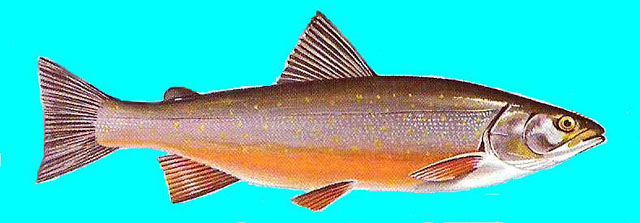| Salmonidae (Salmonids), subfamily: Salmoninae |
| 75 cm SL (male/unsexed) |
|
benthopelagic; freshwater |
| Europe: Alpine and subalpine lakes in Italy (Trentino, Alto Adige), France (Lake Bourget), and Switzerland, Germany and Austria. Introduced in numerous high altitude lakes (Ref. 59043). Reported from Sweden (Ref. 30402). |
|
Distinguished from congeners in central Europe by the following characters: mouth terminal to subterminal, lower jaw not included in upper jaw; snout conical; 25-31 gill rakers; flank greenish brown with reddish spots, belly yellowish to reddish orange; fins red to orange with white margins (Ref. 59043). |
| Inhabits deep lakes in glacial valleys and high altitude lakes. Preys on crustaceans, insects and benthic fauna; a few individuals develop as large piscivores, with a distinct morphology. Spawns on pebble to stone bottom on steep slopes, at depths of 30-120 m (Ref. 59043). |
|
Least Concern (LC); Date assessed: 01 January 2008 Ref. (130435)
|
| harmless |
Source and more info: www.fishbase.org. For personal, classroom, and other internal use only. Not for publication.
